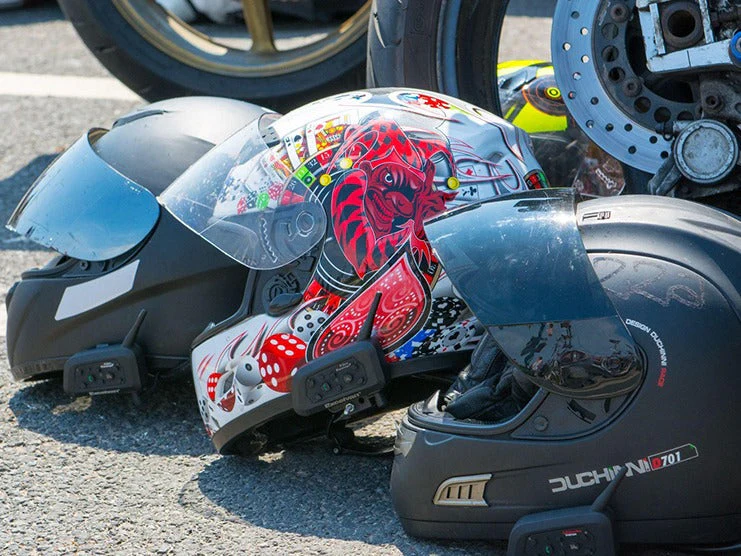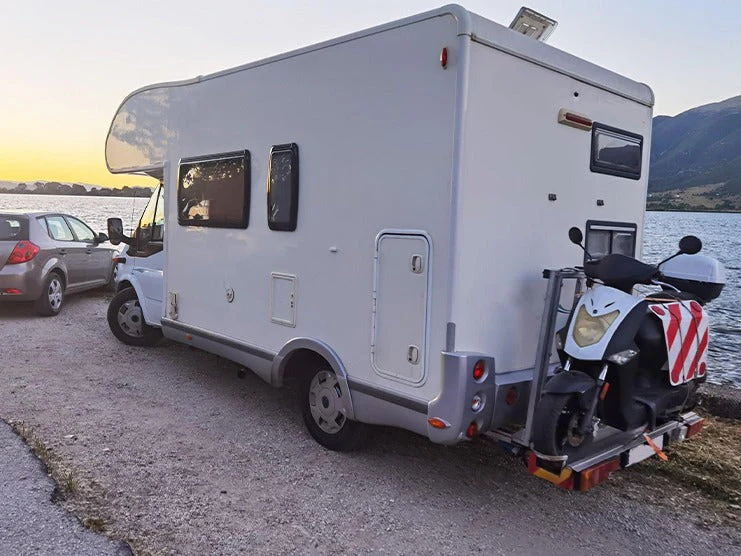Table of Content
Before 1980, there were no fuel-injected motorcycles; only carbureted motorcycles were the mainstream two-wheelers. Over time, carbureted motorcycles became less popular as fuel-injected motorcycles took their place. Nowadays, almost all modern motorcycles are fuel injected. However, carbureted motorcycles are still popular among older riders. As many modern motorcycles have multiple fuel injectors, some carbureted motorcycles are fitted with multiple carburetors. Read this article to learn why some motorcycles have multiple carburetors and how to tune the carburetors.
1. What is a Carburetor?

Motorcycle engines require a balanced mixture of air and fuel to produce power. A carburetor is a mechanical device that mixes air and fuel before transferring it into a combustion chamber.
1.1 The Functions of a Carburetor
A carburetor regulates the quantity of air and fuel in the engine. Depending on the throttle input, it also controls the amount of air/fuel mixture. A carburetor also converts fuel into vapors to make a homogeneous mixture that ensures better combustion.
2. How Does the Carburetor Work?

The carburetor uses Bernoulli's Theorem to operate. Bernoull's Theorem states:
“Where the speed is high, the pressure is low, and where the speed is low. the presssure is high.”
The carburetor does not directly regulate the flow of fuel. It regulates the airflow which draws in fuel that is mixed with air. When you twist the throttle, the throttle valve in the carburetor opens up, allowing more air to enter it. The change in airflow causes a pressure difference, drawing more fuel into the combustion chamber to balance the amount of air. This is why the engine consumes more fuel at high speeds.
3. Single Carburetor
Motorcycles powered by a single-cylinder engine have a single carburetor. A single carburetor configuration is ideal for small-displacement motorcycles as they only require a single passage for airflow and fuel.
4. Multiple Carburetors
Motorcycles powered by a V-twin or multi-cylinder engine have more than one carburetor. Each cylinder has a separate carburetor to ensure separate yet adequate airflow.
5. Why Do Some Motorcycles Have Multiple Carburetors?
For V-twin and multi-cylinder engines, a single carburetor is not enough to provide an adequate air/fuel mixture. The vacuum suction in one cylinder would draw more fuel and interrupt the delivery of air/fuel mixture to other cylinders. V-twin and multi-cylinder engines fitted with a single carburetor will not be able to achieve a smooth power delivery, resulting in misfiring and mistimed combustion cycles.
6. Pros and Cons of Multiple Carburetors
6.1 Pros of Multiple Carburetors
- Smooth power delivery
- Uniform and consistent air/fuel mixture supply to the cylinders
- Synchronization of the combustion and exhaust cycles in all the cylinders
- Reduces the risk of lean or rich air/fuel mixtures
- Better engine position
- Can change the carburetors’ positions and sizes.
- Easy to repair
6.2 Cons of Multiple Carburetors
- Difficult to tune multiple carburetors to avoid mistimed combustion cycles
- Frequent poor acceleration issues due to out-of-tune carburetors
- Exhaust system is prone to damage if the multiple carburetors are out of tune
- Any change in positions will result in reduced airflow
- Exerts more weight on the engine
Also Read: MOTORCYCLE THROTTLE CABLE ADJUSTMENT GUIDE
7. How to Tune Motorcycle Carburetors
Tuning the carburetors ensures steady airflow to the engine’s multiple cylinders and prevents mistimed combustion cycles. Tuned carburetors ensure smooth power output and keep the engine from stalling while starting the ignition and idling.
7.1 Equipment Required to Tune Motorcycle Carburetors
- Screwdriver
- Carburetor tuning kit
- Transparent rubber tube
- Two transparent glass bottles
- Dye (to color the water)
- Water
- A piece of wood
- Glue gun
7.2 Using a Home-Made Apparatus

To tune the carburetors, you will need to prepare an apparatus. Take two glass bottles and stick them onto a flat piece of wood using a glue gun. The bottles must have caps on them to keep air trapped. Using a drill, make two holes in the cap of each bottle. Take the rubber tube and put one end inside the bottle through the hole. Put the other end of the tube in the second bottle through the hole. Make sure the ends of the tube stays at the bottom of the bottle.
Take two rubber tubes and put them inside the bottles while keeping one of their ends outside. Make sure to seal the holes so that air cannot enter the bottles. Remove the bottle caps and pour the colored liquid into both bottles. Make sure to fill both bottles with the same amount.
Note: The tubes that connect the bottles and the manifolds must not dip into the liquid inside the bottles as it will cause the liquid to flow into the engine.
If the motorcycle carburetors are difficult to access due to their positions, you can remove the gas tank.
Unscrew the bolts between the carburetor and engine cylinder (vacuum passage/manifold) to measure the air pressure. Connect the open ends of both tubes to the carburetors through the valve stems and turn on the motorcycle. Twist the throttle two or three times gently and you will observe a change in the height of the liquid in both bottles if the carburetors are not synced. This occurs due to a difference in air pressure between the carburetors.
Let the engine idle while you tune the carburetors. Use a screwdriver to loosen the nuts on the butterfly valves. Keep adjusting the screws on the carburetors while opening and closing the throttle in between until the liquid in both bottles is at the same height. When the liquid in both bottles remains level for some time after opening and closing the throttle, this means the carburetors are tuned.
7.3 Using the Tuning Kit
Note: If the needles on the tuning kits are not calibrated, you calibrated them by tightening the flat-head screws beside the needles.
You can also use a tuning kit to sync the motorcycle carburetors. Connect the vacuum passages to the gauges included in the tuning kit. The tuning kit has several valves stems for different motorcycles. Pick the one compatible with your motorcycle and affix it to the vacuum passage where you removed the bolt.
Turn on the motorcycle and twist the throttle a few times. The needles on the gauges will start moving while the motorcycle is idling. Adjust the screws below the gauges until the needles stop moving.
To tune the carburetors, you will need to adjust the countering nut on the butterfly valve on the carburetor. This process requires patience as it can take time to adjust. Twist the throttle a few times and keep adjusting the countering nut until both needles on the gauge move simultaneously. The needles moving simultaneously indicates the carburetors are synced.
8. Takeaway
Carburetors ensure balanced air and fuel mixtures are delivered to the engine for smooth performance. Motorcycles powered by V-twin and multi-cylinder engines are fitted with multiple carburetors (one for each cylinder). This is to ensure a steady supply of air/fuel mixture to each cylinder to keep the engine operational. A single carburetor fitted on a V-twin engine will fail to deliver adequate air/fuel mixture to the other cylinders, causing irregular power output.
Despite being replaced with fuel injectors, carbureted motorcycles are still popular among older riders. However, multiple carburetors require tuning over time to ensure all the carburetors provide the same amount of air/fuel mixture to each cylinder. If you are unsure how to tune motorcycle carburetors, consult with a professional mechanic.
If you want your motorcycle to perform better, make sure that it is well-maintained and in good shape. You can improve the comfort and looks of your motorcycle by installing aftermarket parts from Viking Bags, including handlebars, fairings, sissy bars, backrests, and crash bars. If you are a fan of motorcycle touring and want to carry more stuff on long trips, Viking Bags also offers a wide range of luggage options, including motorcycle trunk bags, saddlebags, and backpacks.













Leave a comment
All comments are moderated before being published.
This site is protected by hCaptcha and the hCaptcha Privacy Policy and Terms of Service apply.